3.3 Contemporary Life, Art, and Technology
5 min read•june 18, 2024
Victoria Sokol
Isabela Padilha
AP Spanish Language 🇪🇸
54 resourcesSee Units
Contemporary life is highly shaped by technology 🧑💻. Technology has not only expanded people's entertainment options, but it also continuously shapes the way that people work and interact with each other.
Quality of Life
Quality of Life/Calidad de Vida: it is a concept that refers to an individual's overall well-being based on a variety of factors. / Es un concepto que se refiere al bienester general de un individuo baseado en una variedad de factores.
The quality of life is not only a personal measure, but also a collective one. It can be highly influced by the people around you, the environment, the culture and society that someone lives in. Even though the development of technology has impoved people's access to information and pieces of their culture, it has also created a gap between classes. Not everyone has the same access to technology, which can result in a variation in people's quality of life and perceptions of their own society.
How Communities Value Art
When societies feel safe and their basic needs are met, art🎨 springs forth into creation. In this section, we will look at how communities value art and some examples of places where art is most highly valued. Art is also a mode of entertainment and it plays a crucial role in people's daily lives.
Strive for Five Vocab 🔑🔑
| Palabra clave | English | Descripción |
| El museo | Museum | Un lugar con objetos de importancia históricamente, culturalmente, científicamente, o artísticamente en la sociedad. |
| La exposición | Exhibit | Es cuando hay una serie de objetos que están expuestos para que las personas puedan verlos. |
| Arte callejero | Street art | Es arte que está pintado directamente en las paredes afuera de un edificio. A veces son contratados y otros son más de vandalismo. |
| Fuente de inspiración | Muse | Es donde los artistas se sacan las ideas para hacer su arte. |
| Espectador | Viewer | Es la persona que viene a ver el arte. |
Street Art
Across the world🌎, artists will find big open spaces and beautify them. In Central America, street art is booming. Some items stem from an artistic desire to cover up plain buildings created out of lower-grade materials. Others began as vandalism to make a statement against "the man". Others were decorated by the necessity for advertising or political propaganda.
Finally, other murals were created to display the past or present struggles Hispanic communities face. Communities show that they value street art by permitting its existence through contracting street artists for permitted work and by minimizing legislation against street artists.
The enigmatic street artist Banksy isn't Hispanic, but has garnered international fame for his street art. One piece attributed to Banksy is depicted below.
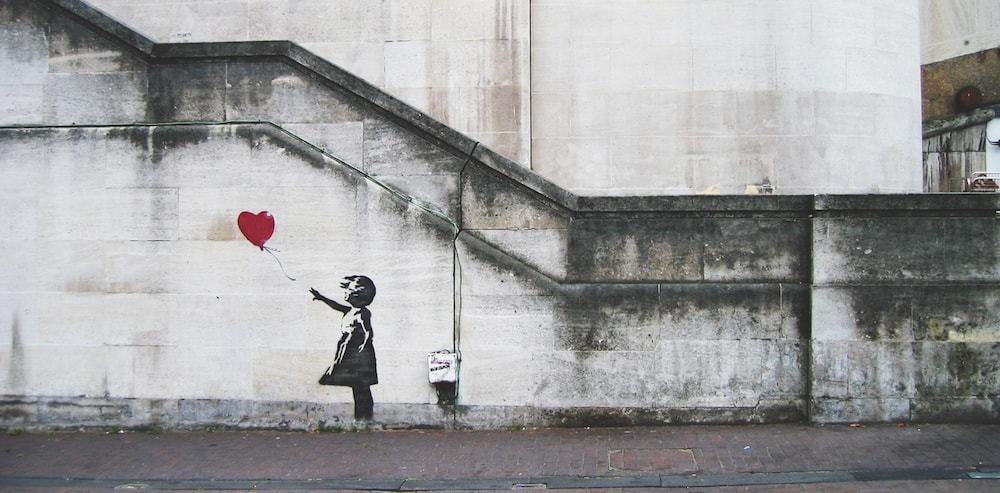
Museums began as personal collections of art by the wealthy elite in order to show off the rich purchases they had accumulated. Slowly over time art owners opened their collections to wider and wider audiences. Public institutions began during the Age of Enlightenment💡 in the 17th and 18th centuries. Now, public museums can be found all across the world; some are even digitizing their collections for those who cannot travel✈️ to see the works of art in person. Below are a few examples of notable museums in the Spanish-speaking world.
Museo Nacional del Prado in Madrid, España🇪🇸 opened to the public on November 19th, 1819. The building's first purpose was to hold the National History Cabinet but was transformed into the Royal Museum of Painting🎨 and Sculpture. Throughout history, it changed names a few more times until today where many people simply refer to it as El Prado.
This museum has a large collection of works by Bosch, Titian, El Greco, Rubens, Velázquez, and Goya. Collections inside include paintings about saints, the New Testament, royal portraits, secular portraits, trades and professions, the Virgin Mary, mythology, the Old Testament, and social realism/everyday life.
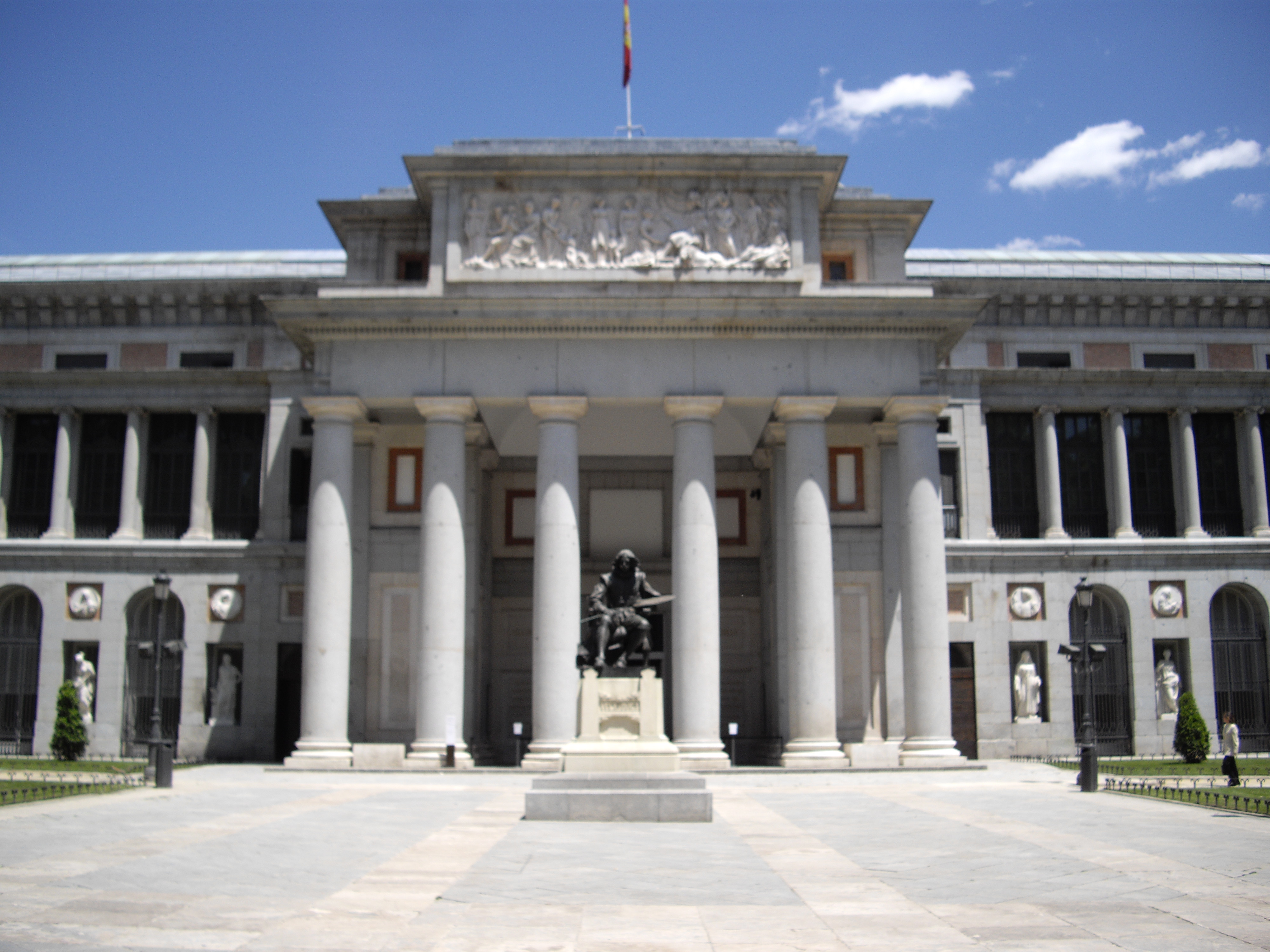
Museo Nacional de Bellas Artes in Buenos Aires, Argentina🇦🇷 holds both international masterpieces and a collection of Argentinian art🎨. This museum opened on December 25th, 1895 in a different building and moved to the location pictured below in 1909. The museum's permanent collection has around 688 major works of art and over 12,000 sketches✏️, fragments, potteries🥣, and other minor works of art🎨
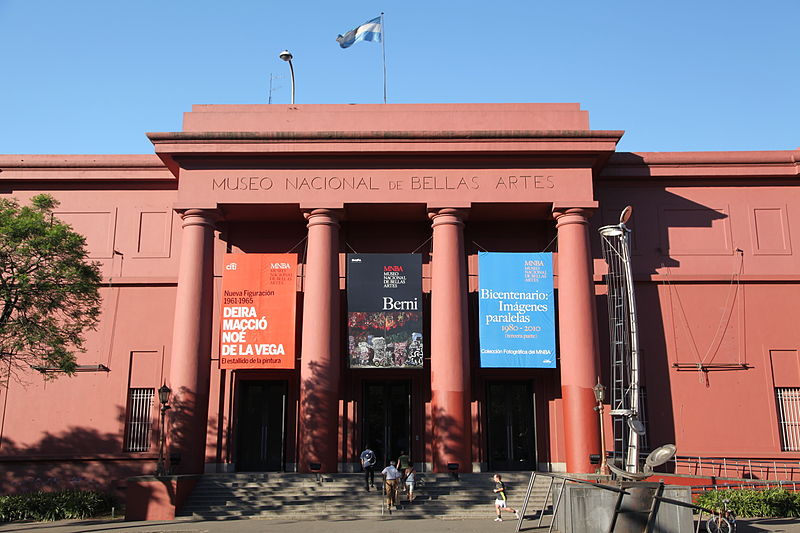
Other Historical Sites
La Alhambra de Granada, España🇪🇸 is primarily an alcázar, a fortress, on a hilltop at the edge of the Sierra Nevada mountain range. It was built by the Moors during their 800-year occupation of southern Spain. The fortress includes multiple ornately decorated buildings and gardens within the protective walls. The architecture itself is an artistic feat by including Mudéjar style which is a mixture of Christian✝️ and Islamic☪️ art applied to structures. Even through multiple occupations and transformations, this historical site has been deemed a UNESCO World Heritage Cultural Site and is protected by the United Nations from destruction because of its extraordinary importance to humanity.
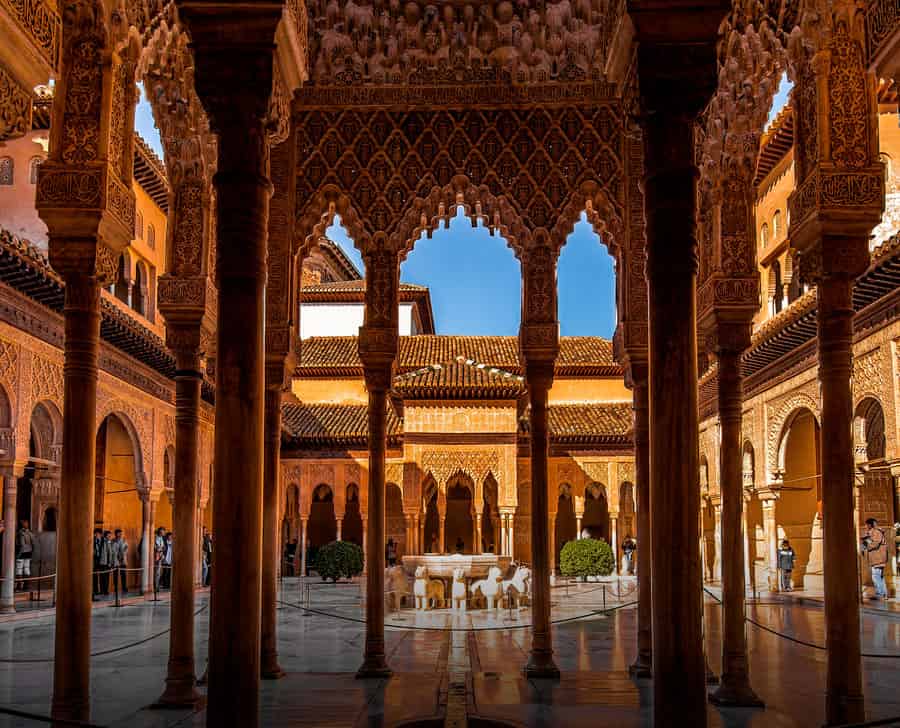
Image from Alhambra.org
¡Vamos Practicar! - Task Model
Lee el seguinte texto: Universidad de Chile saludos de bienvenida Facultad de Artes.
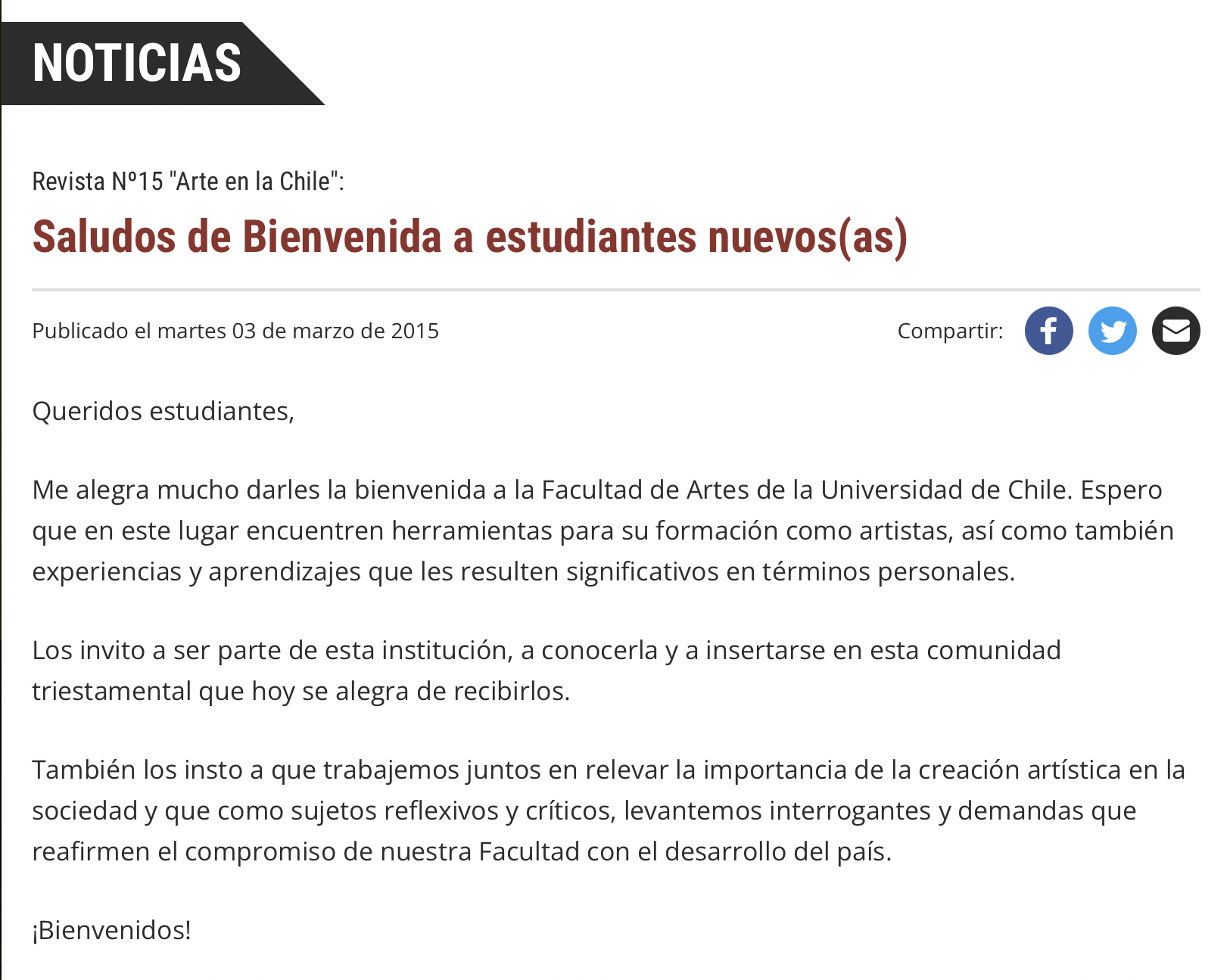
Responde las seguintes preguntas:
- Purpose - ¿Cuál es el propósito de este texto?
Possible answer: El texto sirve para recebir los nuevos estudiantes de la Faculdad de Artes de Chile con una bienvenida bien afectuosa. La carta también introduce informacciones importantes para los novatos.
- Tone - ¿Qué elementos contribuyen para un tono más o menos formal?
Possible answer: El tono formal es perceptible por el vocabulário utilizado y la estructura de las frases. Para el tono menos formal, algunas frases afectuosas que utilizan el punto de exclamación enfatizan más las emociones que el contenido, lo que transmite más informalidad.
- ¿Qué pueden aprender los estudiantes sobre la Universidad de Artes a través de la carta?
Possible answer: Los estudiantes pueden aprender diversos aspectos subjetivos y físicos de la faculdad. Por ejemplo, los líderes hablan sobre la estructura del edificio como los "12 pisos y 3 subterráneos," lo que indica el tamaño del departamento de artes de la universidad. En la carta también hablan sobre el objetivo de la institución, que consiste en desarrollar la creación artística y crítica.
Browse Study Guides By Unit
👨👩👧Unit 1 – Families in Spanish-Speaking Countries
🗣Unit 2 – Language & Culture in Spanish-Speaking Countries
🎨Unit 3 – Beauty & Art in Spanish-Speaking Countries
🔬Unit 4 – Science & Technology in Spanish-Speaking Countries
🏠Unit 5 – Quality of Life in Spanish-Speaking Countries
💸Unit 6 – Challenges in Spanish-Speaking Countries
📚Study Tools
🤔Exam Skills

Fiveable
Resources
© 2025 Fiveable Inc. All rights reserved.